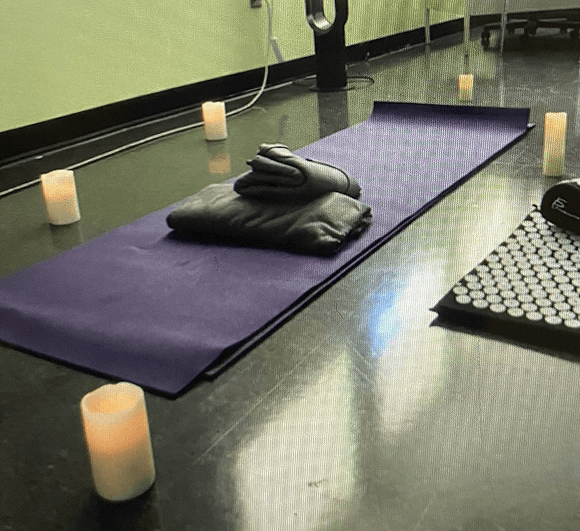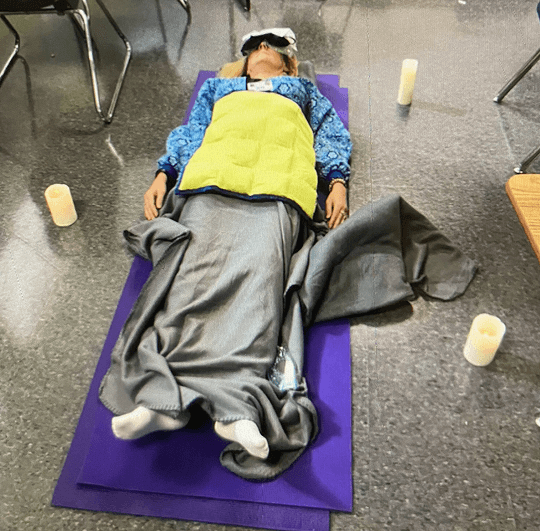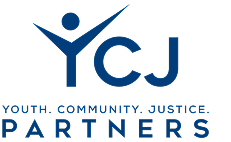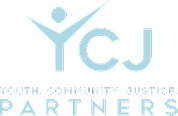This is the second installment of a three-part series on a rest-focused program co-designed with and for youth in custody. In this part, we will explore the program activities. Part three will follow with feedback from the youth participants.
This is the second installment of a three-part series on a rest-focused program co-designed with and for youth in custody. In this part, we will explore the program activities. Part three will follow with feedback from the youth participants.
- Dim lights, binaural beats: The session starts by creating a tranquil environment. Classroom lights are dimmed enough to maintain visibility for custody staff, while soothing background sounds such as binaural beats –chosen by the youth—enhance the calming atmosphere.
- A disarming entry: At the door of the classroom, participants could choose to have Evian facial spray misted on their faces while taking three deep breaths. Many of the youth viewed this ritual as the ‘official beginning’ of the group session.
- Clinicians’ note: Introducing the use of Evian facial spray serves as a practical application of Dialectical Behavior Therapy’s (DBT) TIPP strategy for managing acute stress. TIPP stands for Temperature, Intense exercise, Paced breathing, and Progressive muscle relaxation. While TIPP is designed as a short-term tool for navigating intense or overwhelming distress, starting sessions this way allowed youth to experience the calming effects of cool spritzed water in a low-pressure environment. This practice also established a habit that youth could draw on to ‘cool off’ during intense moments throughout their week or month.
- The healing pod: After deep breaths and/or Evian spritzes, participant walked to their healing pod. As you can see from the photos below, healing pods had two yoga mats, two blankets (one of which was weighted), an eye mask, and 4-5 flameless candles. The youth’s chosen aromatherapy oils were also dabbed onto tissue paper for their use. Stuffed animals were optional (but often taken!).
- Calming elective #1: After spending around ten minutes in their healing pods, the youth were free to select their first 15-minute calming activity, such as painting, letter-writing, or performing head and neck self-massages. Importantly, they also had the option to rest without any expectations. Youth were encouraged to become self-aware of their surroundings and their internal sensations. For instance, one youth noticed that he began to conclude his yawns with longer and more relieving exhales than before. The Calming elective, like the rest of the program, emphasized autonomy and choice.
- Movement arts: During this optional 10–15-minute activity, youth had the choice to perform their own movements or ask the facilitator for support with breath, posture, and cues. Popular choices included holding Tree Pose and practicing the Warrior series. Some participants challenged themselves to see how long they could maintain these poses, fostering a deep level of awareness—an essential component of true mindfulness.
- Calming elective #2: Youth have the chance to return to a previously enjoyed Calming Activity or try a new one. During the second calming activity, usually around ten minutes, youth had the option to use tune-up therapy balls or simulate a beach experience with a sand tray, misting fan, and cool ice packs. A notable theme that emerged was the deeper state of calmness the youth experienced after engaging in movement activities. This observation highlighted their developing self-awareness, as they recognized an increased ability to relax following physical activity.
- Gentle wakefulness: By this point, the youth have spent nearly an hour in a serene environment filled with calming sounds, soft lighting, and soothing aromas—a rare experience in custody, or anywhere else, for that matter. They have engaged in activities chosen to meet their current needs. To ease their transition back into unit life, youth were invited to participate in a gentle wakefulness activity, which included a guided relaxation session. The content of this session, whether crafted independently by the youth or collaboratively with the facilitator, wove together themes of awe, purpose, forgiveness, gratitude, hope, courage, and joy. The goal was to end the session on a note of inspiration, kinship, and peace.
- Self-Awareness: During the final three minutes of the session, youth were invited to reflect on their physical, emotional, and spiritual states. They considered how the activities affected any feelings of tightness, heaviness, or disconnection in their bodies. It was after one of the concluding self-awareness sessions that a young man said, “I have never felt this safe in my body.”

Photo 1: Each youth’s ‘healing pod’ included two yoga mats, two blankets (one of which was weighted), an eye mask, and 4-5 flameless candles. The youth’s chosen aromatherapy oils were also dabbed onto tissue paper for their use.

Photo 2: A former Charge Nurse from Contra Costa County demonstrates the use of a healing pod, featuring a bright yellow weighted blanket and a cooling gel eye mask.
Acknowledgments: Dr. Gerchow’s work would not have been possible without the support of the Contra Costa County Department of Probation, particularly staff from the Cypress unit (Youthful Offender Treatment Program 2017-2019) and Shasta unit (Girls In Motion, 2016-2019).



